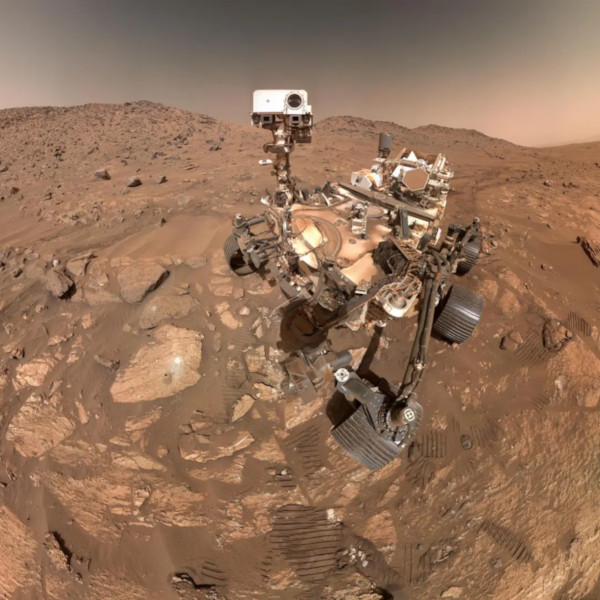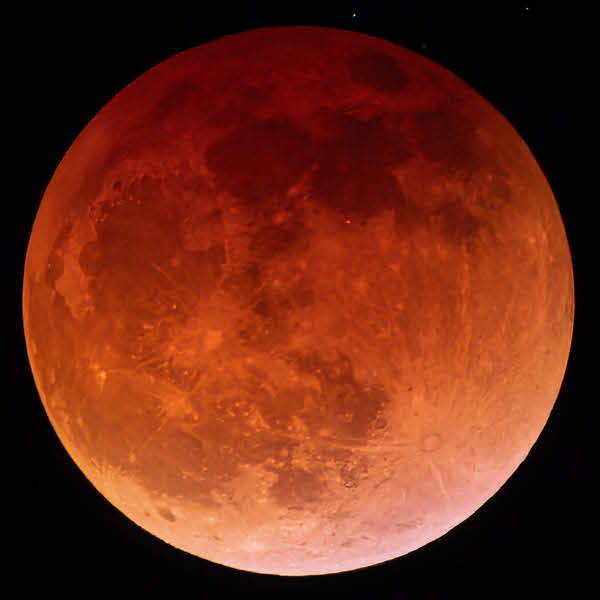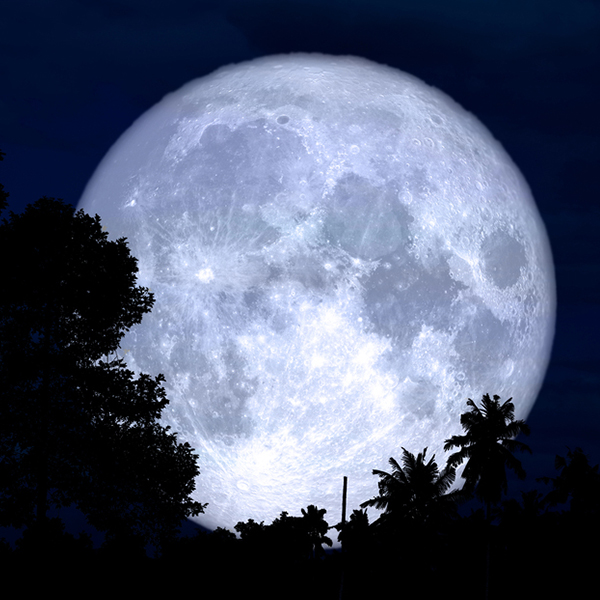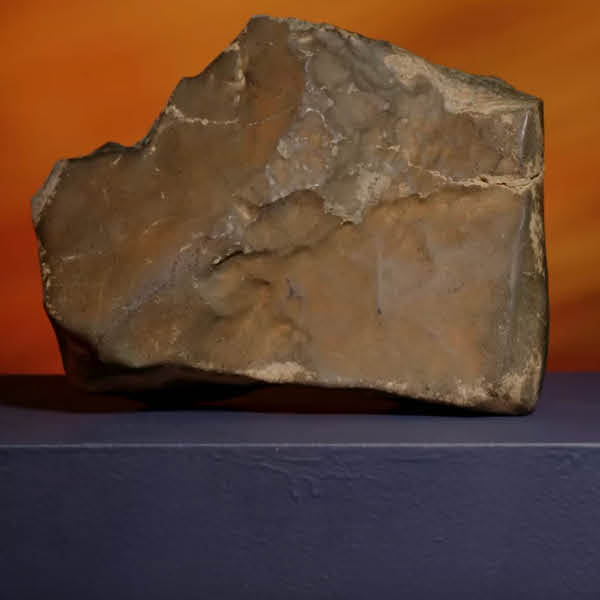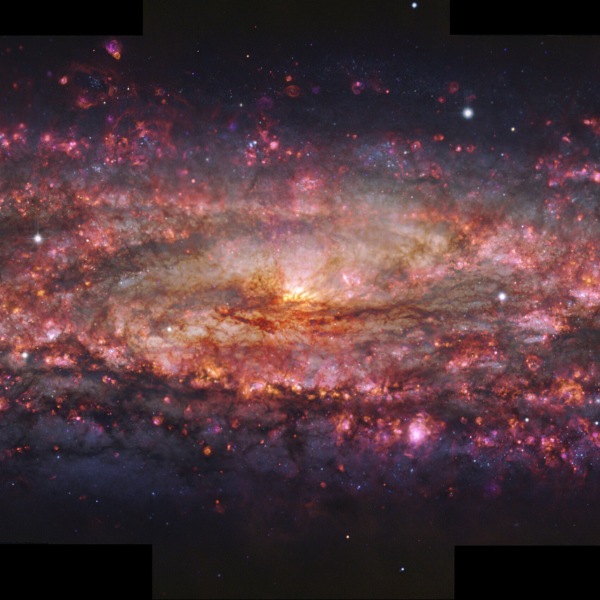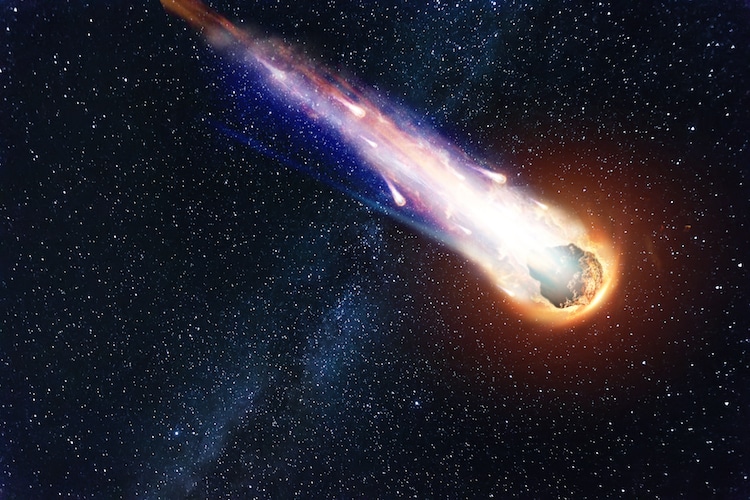
Stock Photos from Marko Aliaksandr/Shutterstock
If you’re fascinated by celestial events, this calendar by Celestron will help you keep track of moon phases, meteor showers, eclipses, and more. The 2020 Celestial Calendar marks this year’s most important outer space phenomenons month by month, so you’ll always know exactly where and when events will occur in advance.
The Celestial Calendar is particularly useful for astrophotographers and stargazers, who will now be able to plan out their expeditions for the entire year. On February 9, 2020, the calendar reveals that the moon was at its closest to Earth and appeared larger and brighter. If you missed it, don't worry! This event—known as the Supermoon—is seen to reoccur in March, April, and May this year. Another notable event is the biggest meteor shower of the year (called Geminids) on December 13 and 14. On these nights, those in the Northern Hemisphere will have a good chance of catching the bright streaks of light soaring across the sky.
The calendar also references important planetary events such as the conjunction of Jupiter and Saturn on December 21. For the first time since the year 2000, the two planets will line up close to the sun and be visible from Earth with the help of a telescope. “They will be so close that they will appear like a bright, double planet in the sky,” say Celestron. “Look to the west just after sunset to glimpse this rare planetary sight.”
A detailed calendar guide can be found on Celestron’s blog, where you’ll also find a free downloadable poster version that you can print and hang on your wall.
The 2020 Celestial Calendar by Celestron marks this year’s most important celestial events month by month.
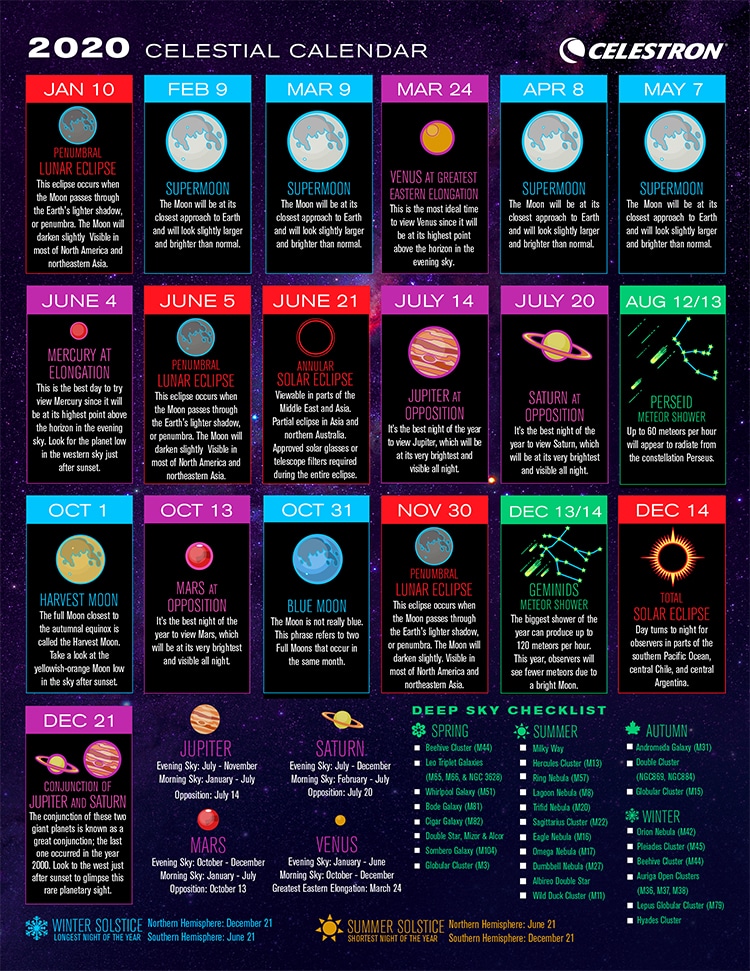
Celestron: Website | Facebook | Instagram | Twitter | YouTube
My Modern Met granted permission to feature images by Celestron.
Related Articles:
Artistically Arranged Time Slice Photos Show the Stages of a Total Solar Eclipse
This Image of the Total Eclipse Is Being Called “History’s Most Amazing Photo”
15+ Awe-Inspiring Shots of the Super Blue Blood Moon Taken From Around the World
NASA’s DIY Moon Calendar Shows the Moon Phase on Any Day of the Year














































































